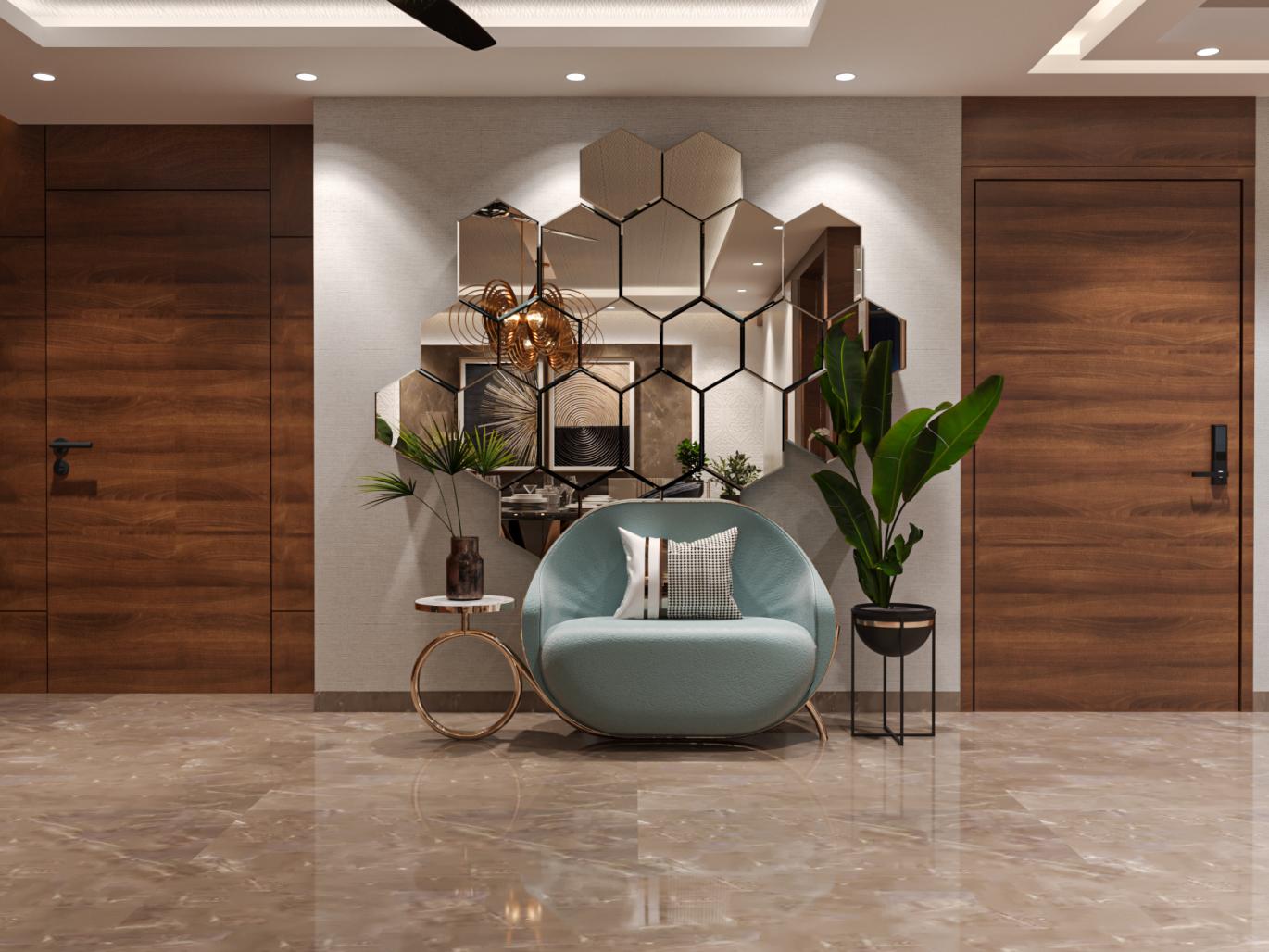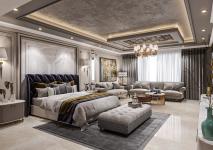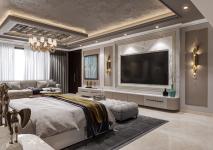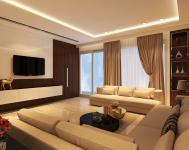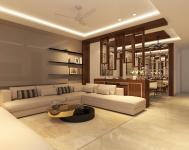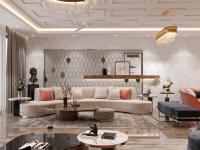Lighting in interior design acts as a silent conductor of the atmosphere and the unseen hand that sculpts how we experience a space. Envision a space bathed in a warm and inviting glow that elevates textures, artworks and decor elements! This is the impact that lighting has on a space and helps homeowners and designers create a cosy and functional atmosphere. Lighting design might seem like an afterthought, but with a few key principles and a dash of creativity, one can harness the power of light to design a space that reflects personality and fulfils needs. In this article, Ar. Nikita Bajaj Pathak, Founder and Principal Architect of Design21 delves into the world of lighting to illuminate mundane spaces into emerging havens.
Types of Lighting in Design
Lighting in interiors mainly revolves around three types- ambient lighting, task lighting, and accent lighting. Ambient lighting sets the overall mood of the space and chandeliers, recessed downlights, and wall sconces are all common choices for ambient lighting. Too little ambient light creates a cave-like atmosphere, while too much can feel harsh and uninviting.
Task lighting is provided for specific activities like reading or cooking, ensuring you can perform activities comfortably. For example, a desk lamp with an adjustable arm allows you to direct light exactly where you need it. Ultimately, accent lighting adds the finishing touches, highlighting architectural features or creating dramatic focal points. It allows us to play with light and shadow, adding depth and dimension to the space.
Choosing the Right Lighting Fixture
Once you understand the types of lighting, it is essential to opt for appropriate fixtures to create a cohesive look. Firstly, the chosen fixture style should complement the design of the space, be it eclectic, traditional, or modern. For example, a pendant lamp in the industrial style would contrast a room with a classic design. Further, the lighting fixture size and location must be proportionate to the space and provide appropriate illumination. For instance, the size of the chandelier in a dining room should be determined by the size of the table to create a harmonious look. Lastly, opting for energy-efficient lighting fixtures like LED or smart lights can create a bold statement and align with an eco-friendly ethos.
Impact of Lighting on Colour and Texture
Lighting elevates the colour and texture of the space to new levels of allure. It plays a crucial role in creating versatile environments that can easily transition from day to night, from work to play, and from intimate gatherings to lively celebrations. Adding cool-toned lights like blues and greens can create a serene atmosphere while warm lights like yellows and reds can create an eclectic vibe in the space. Further, light interacts with surface variations. Harsh overhead lighting can flatten textures, while angled lighting creates dramatic shadows that highlight them.
Fostering Flexibility in Spaces
Flexibility is essential in interior design, allowing spaces to adapt to different activities, moods, and occasions. Through the use of dimmers, programmable lighting systems, and adjustable fixtures, designers can give users the ability to customise their lighting experience according to their preferences, enhancing the overall functionality and usability of the space. In our project, DLF Crest, we have strategically positioned fixtures and adjusted the intensity of focus lights and downlights in bedrooms, to manipulate effects and create desired atmospheres and visual interest.
In sum, lighting can impact the overall space, from setting the mood and enhancing architectural features to improving functionality and fostering flexibility. So, the next time you step into a well-lit room, take a moment to appreciate the magic of lighting and how it can truly light up your space!
2023
2023
..
Team Design21
